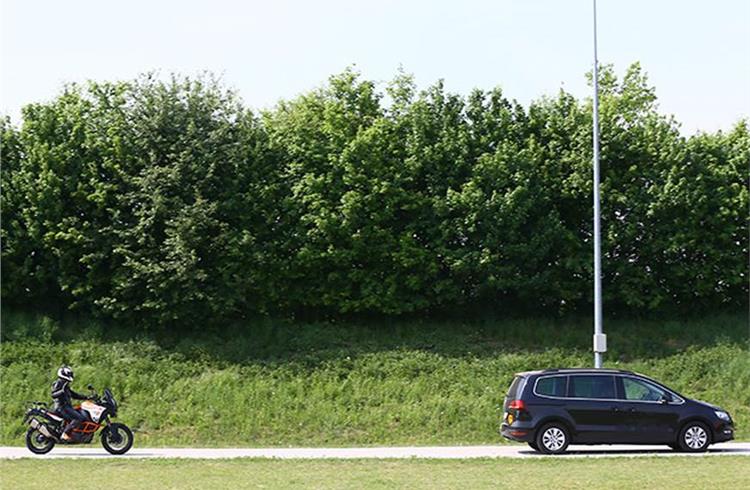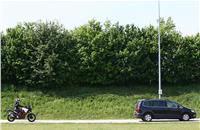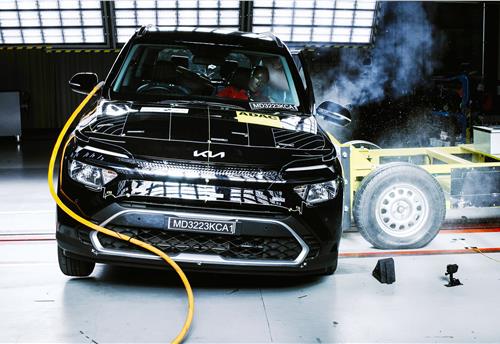KTM developing sensor-based rider assists
Two sensor-based rider assistance systems in the works; adaptive cruise control showcased on 1290 Super Adventure.
While adaptive cruise control systems have been offered on cars for a while now, motorcycles haven’t yet been commercially equipped with this technology. But that is about to change soon, with multiple motorcycle manufacturers indicating a desire to incorporate this technology.
Ducati recently made clear its intentions to introduce radar-based adaptive cruise control on its models and now, KTM has jumped on the bandwagon as well, even showing us a working prototype.
The two systems that KTM is working on are Adaptive Cruise Control and Blind Spot Detection. KTM’s vice president of R&D, Gerald Matschl has stated that these systems are ‘still in development’ and ‘not for next year’, indicating that the technology is yet in its infancy. Considering these are vital safety systems, KTM’s intensive reliability testing before going public with it is understandable.
However, in an encouraging step, Matschl did go on to demonstrate the working of the prototype himself. A demo KTM 1290 Super Adventure, fitted with front and rear-facing sensors, was made to follow a people carrier. With his right foot off the rear brake lever and his right hand away from the handlebar, the motorcycle matched its speed to that of the car in front and maintained a constant gap without any rider input whatsoever.
To elaborate, the front sensor is activated when cruise control is engaged at speeds greater than 30kph; once the vehicle in front has been detected and locked on, the speed of the motorcycle is controlled using the automatic throttle and braking management. KTM believes that once the technology has been perfected, the motorcycle will be able to react to emergencies and apply the brakes faster than any rider can.
The second system, Blind Spot Detection, uses the rear-facing sensor in conjunction with LED lights embedded into the mirrors, to warn riders about vehicles approaching from the rear. Along with the illumination of the LEDs, a warning will also be displayed on the TFT dashboard.
Considering the development costs will be substantial, the technologies are likely to make their debut on the next generation of the 1290 Super Adventure, perhaps towards the end of 2020.
Also read:
Ducati tests front and rear radar for rollout on a future production motorcycle
RELATED ARTICLES
Ford to build more EV software capability at Chennai tech hub
Ford Business Solutions India, which currently employs 12,000 personnel set to add 3,000 more; Ford, which is known to b...
ASK Automotive to set up JV with Aisin to sell aftermarket parts for cars
Ask Automotive will have 51% of the equity of the joint venture to be set up with Aisin Asia (Thailand) Company and Aisi...
Kia Carens gets 3-star Global NCAP rating in fresh tests
The Carens MPV, which was tested twice under the new protocol, scored zero stars for adult occupancy in the first test.





 11 May 2018
11 May 2018
 2981 Views
2981 Views








 Autocar Pro News Desk
Autocar Pro News Desk




